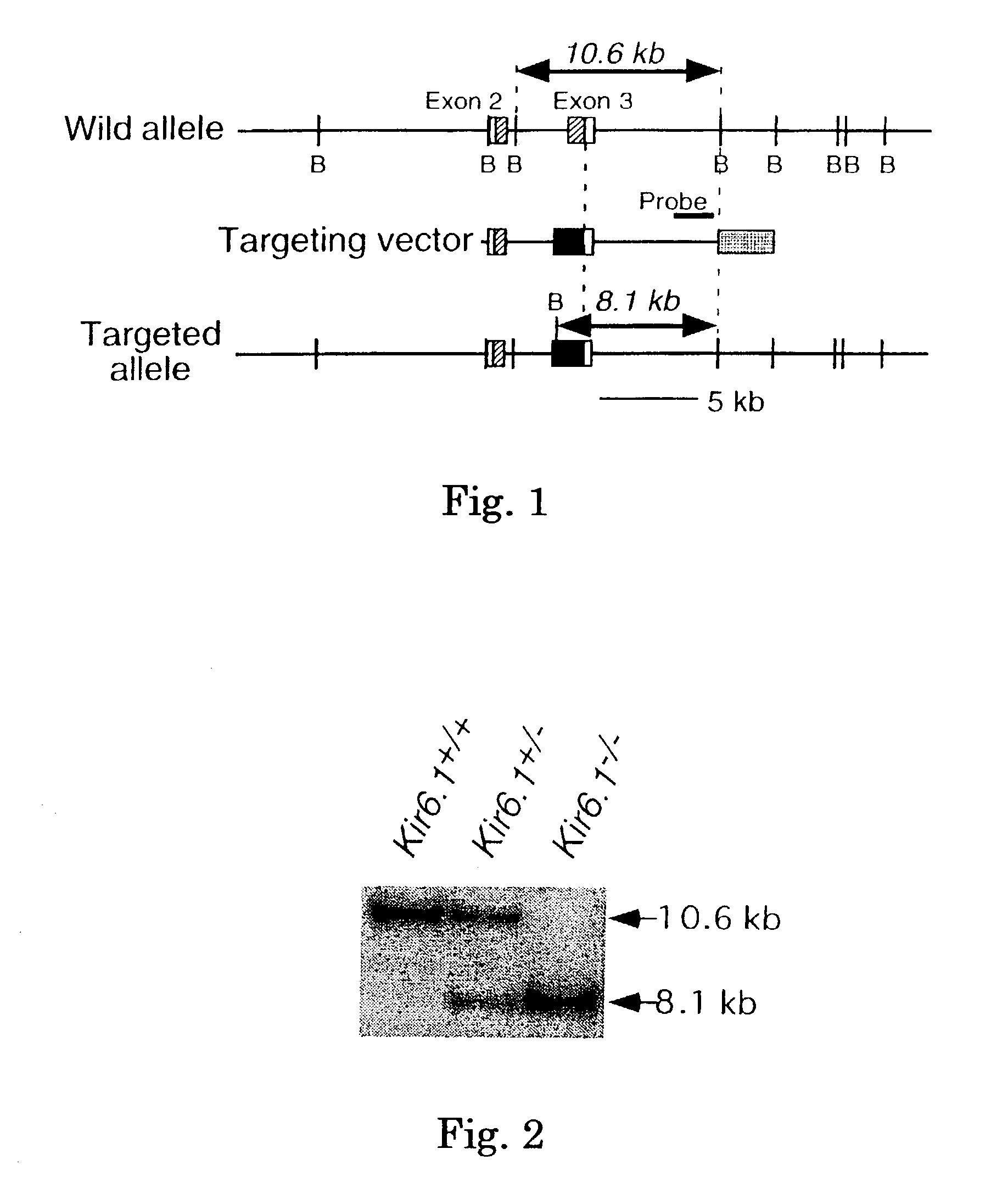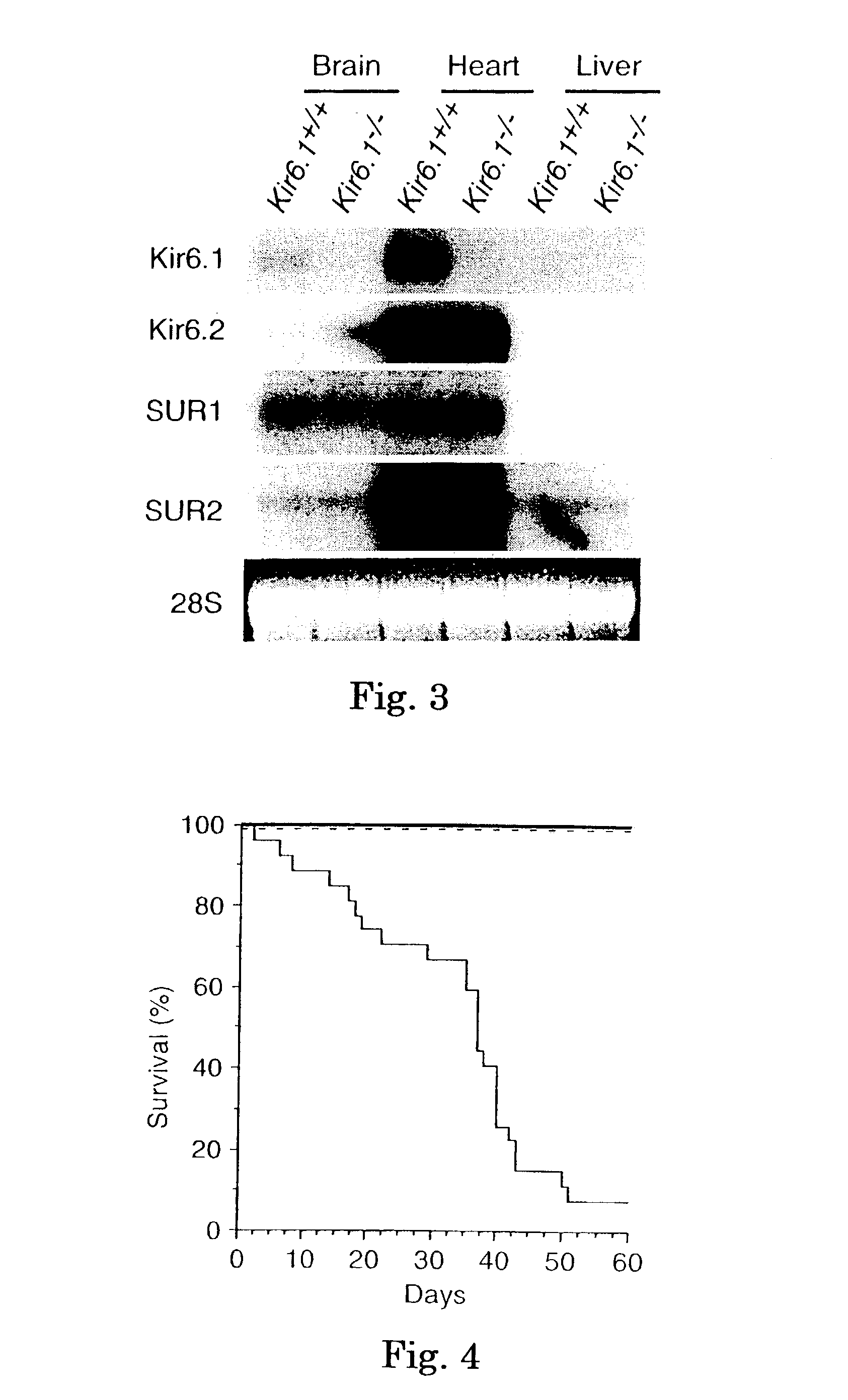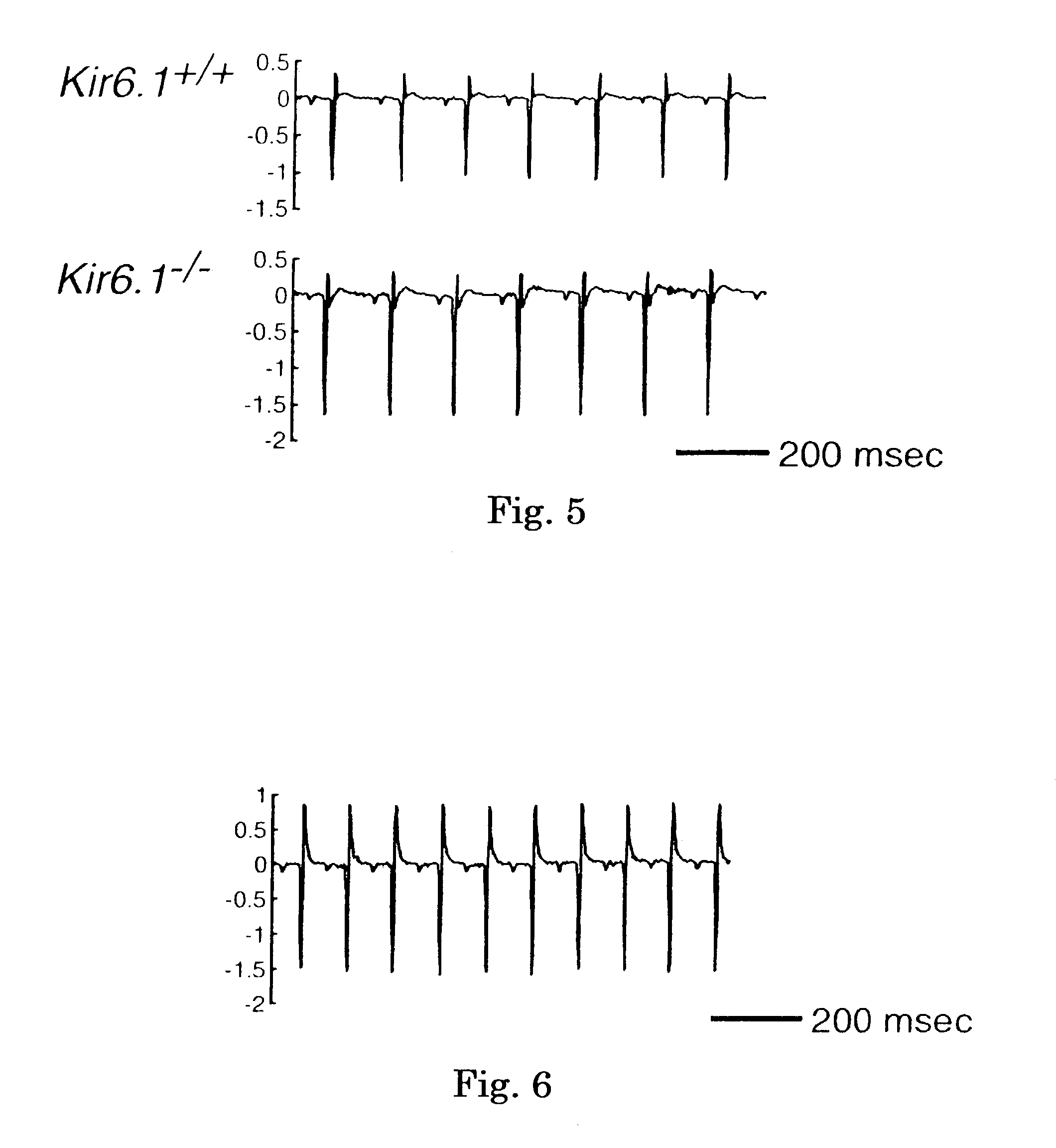Mice lacking inward-rectifying potassium channel Kir6.1
a potassium channel and inward-rectifying technology, applied in the field of inward-rectifying potassium channel kir6 . 1, can solve the problem of high incidence of sudden death
- Summary
- Abstract
- Description
- Claims
- Application Information
AI Technical Summary
Benefits of technology
Problems solved by technology
Method used
Image
Examples
examples
[Generation of Kir6.1− / − Mice]
− / − Mice>
[0029]The preset inventors generated mice lacking Kir6.1 by replacing a part of intron 2 and exon 3 of the Kir6.1 gene that includes the pore-forming region of the channel (FIG. 1). Briefly, the 129Sv mouse genomic library (in λDASH phage library) was screened using a full length of the coding region of mouse Kir6.1 cDNA (SEQ ID NO:2) (nt. 1-1275). Twelve positive clones were isolated and the restriction enzyme map was constructed. Based on the restriction enzyme map thus obtained, a targeting vector was constructed by replacing, with the neomycin resistant-gene cassette, a fragment ranging from Xbal site in intron 2 located about 1.2 kb upstream of exon 3 to MroI site in exon 3 of the mouse Kir6.1 gene. Genomic 3.8 kb and 7.0 kb fragments were used as 5′- and 3′-arms, respectively. For negative selection, a thymidine kinase cassette was added in the 3′ end of the targeting vector. The targeting vector was introduced into an ES cell line (R1) b...
PUM
| Property | Measurement | Unit |
|---|---|---|
| pH | aaaaa | aaaaa |
| pressure | aaaaa | aaaaa |
| length | aaaaa | aaaaa |
Abstract
Description
Claims
Application Information
 Login to View More
Login to View More - R&D
- Intellectual Property
- Life Sciences
- Materials
- Tech Scout
- Unparalleled Data Quality
- Higher Quality Content
- 60% Fewer Hallucinations
Browse by: Latest US Patents, China's latest patents, Technical Efficacy Thesaurus, Application Domain, Technology Topic, Popular Technical Reports.
© 2025 PatSnap. All rights reserved.Legal|Privacy policy|Modern Slavery Act Transparency Statement|Sitemap|About US| Contact US: help@patsnap.com



